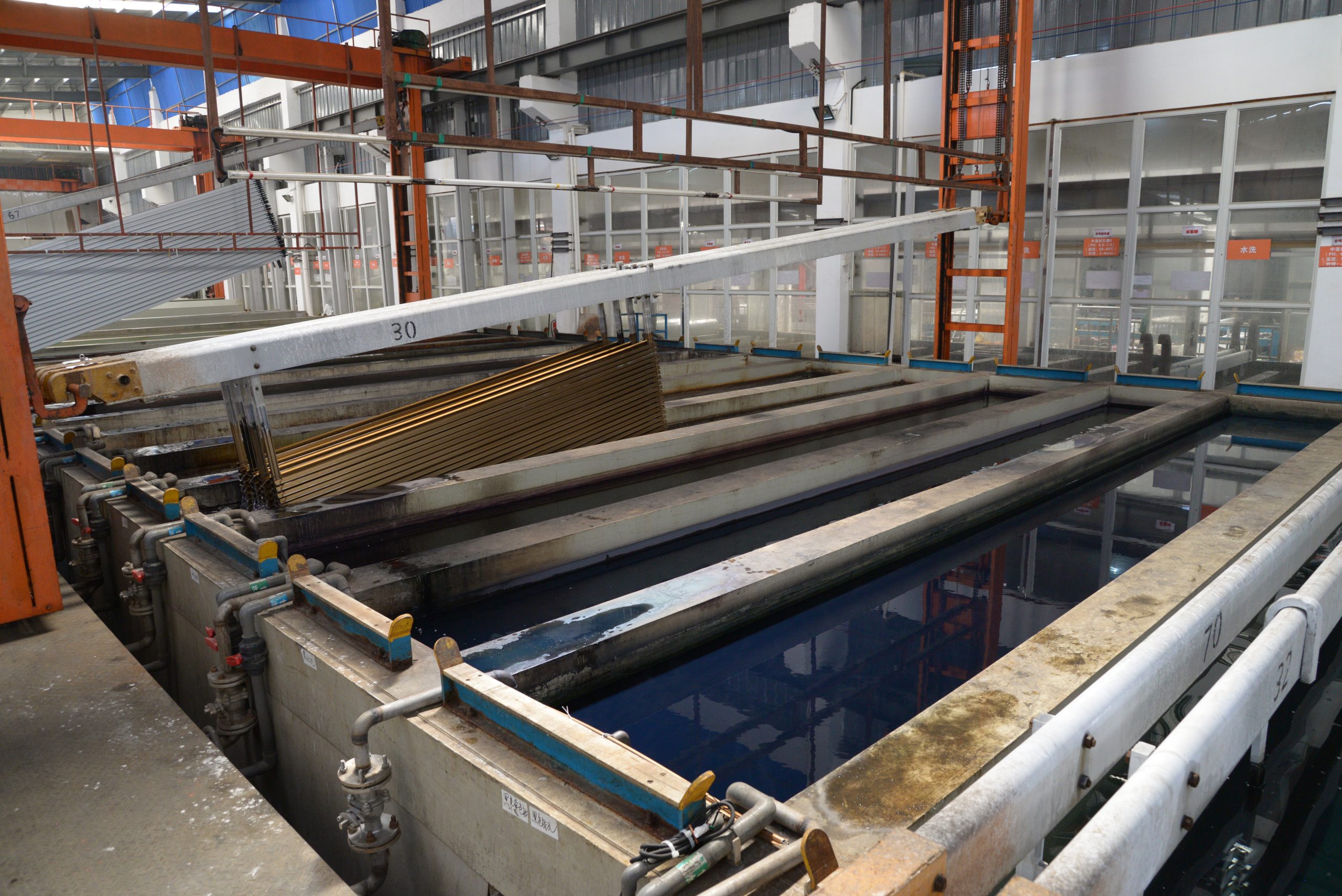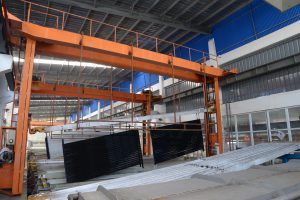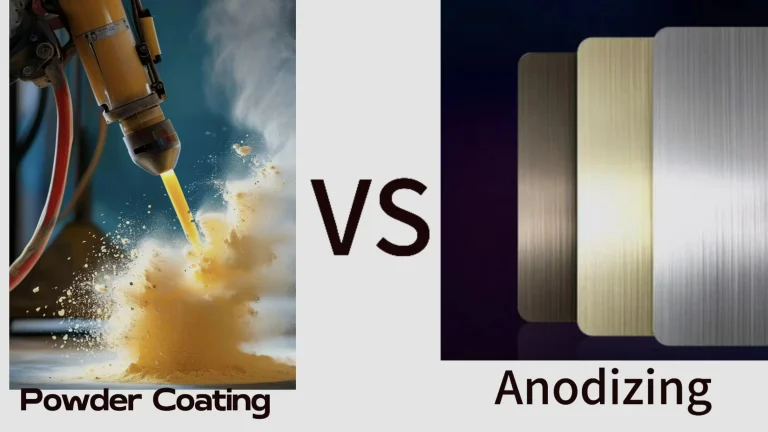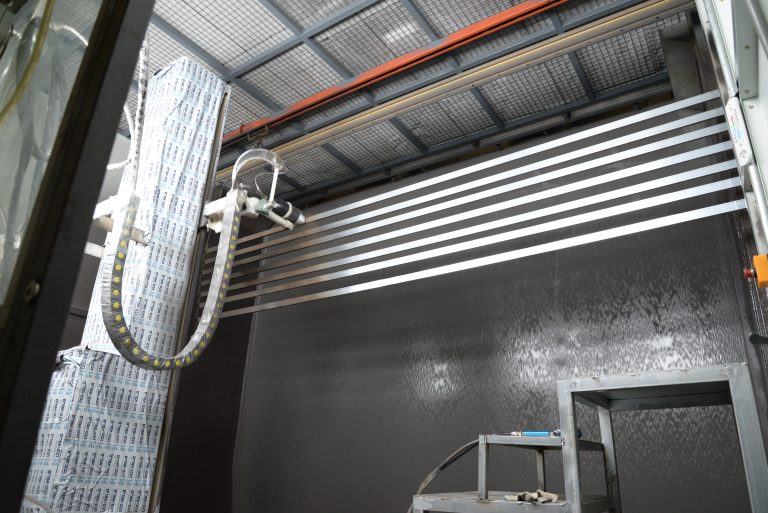Aluminum Profile Anodic Electrophoresis: Ultimate Guide to Surface Treatment

Aluminum profile anodic electrophoresis is a surface treatment process that strengthens aluminum profiles by applying a uniform, protective coating. This method improves corrosion resistance, durability, and aesthetic appeal, making it essential for industries like construction, automotive, and electronics. In this guide, we break down the principles, processes, and benefits of anodic electrophoresis in simple, actionable terms.
How Electrophoresis Enhances Aluminum Coating: Principles and Process Explained
Electrophoresis is a process that uses an electric field to deposit a uniform coating on aluminum profiles. This method ensures a durable, protective, and visually appealing surface. Below is a step-by-step explanation of how electrophoresis works:
1. Electrolysis: Creating the Alkaline Layer
When electricity flows through the system, water molecules split into hydrogen ions (H⁺) and hydroxide ions (OH⁻). At the cathode (negative electrode), the hydroxide ions create an alkaline environment. This environment reacts with positively charged resin particles, forming insoluble compounds that adhere to the aluminum surface.
- Reaction Example: H₂O → OH⁻ + H⁺
2. Electrophoretic Movement: Guiding Resin Particles
Charged resin particles move toward the cathode under the influence of the electric field. This controlled migration ensures that the coating material is evenly distributed across every surface of the aluminum profile, even in hard-to-reach areas.
3. Electrodeposition: Forming the Coating
When resin particles reach the cathode, they react with the alkaline layer and solidify into a dense film. This step ensures strong adhesion between the coating and the aluminum substrate, creating a smooth and uniform finish.
4. Electro-osmosis: Removing Excess Water
As the coating forms, water trapped within the film is expelled due to electro-osmotic forces. This dehydration step strengthens the coating and improves its resistance to wear and corrosion.
Key Advantages of Electrophoresis
- Uniform Coverage: The electric field ensures consistent coating on all surfaces, including intricate shapes.
- Enhanced Durability: The resulting film resists corrosion, scratches, and environmental damage.
- Efficient Processing: The automated nature of electrophoresis makes it suitable for high-volume production lines.
Practical Application Example
Think of electrophoresis as a magnet pulling paint particles onto a metal surface. Instead of relying on manual application, this process uses electrical forces to ensure every part of the aluminum profile is evenly coated.
By following these principles, anodic electrophoresis transforms raw aluminum profiles into high-quality components used in industries like construction, automotive, and electronics. This process not only enhances functionality but also adds aesthetic value to finished products.
Anodic Electrophoresis Process
1. Electrolysis (Decomposition)
Electrolysis initiates the process by breaking water molecules into hydrogen (H⁺) and hydroxide ions (OH⁻) at the cathode. This reaction forms a highly alkaline layer on the cathode surface. When cations interact with hydroxide ions, insoluble substances form and deposit as a coating film. The chemical equation for this step is:
H₂O → OH⁻ + H⁺
This stage sets the groundwork for coating deposition.
2. Electrophoretic Movement
Charged particles move under the influence of an electric field:
- Cations (resin particles and H+) migrate toward the cathode.
- Anions travel toward the anode.
This movement ensures uniform distribution of coating materials in the solution and prepares them for deposition on the workpiece.
3. Electrodeposition (Precipitation)
Resin cations reach the cathode surface and interact with its alkaline environment. This neutralization causes resin particles to precipitate and adhere to the workpiece surface, forming a durable, consistent coating layer. This step enhances both protection and appearance.
4. Electro-osmosis (Dehydration)
Electro-osmosis removes water from the coating film through microscopic capillaries under the electric field’s influence. As water is expelled, the coating solidifies and adheres firmly to the workpiece surface. This step completes the electrophoresis process, ensuring a transparent, durable finish.
By following these steps, manufacturers can achieve high-quality finishes that improve both functionality and aesthetics in aluminum profile applications.
Advantages and Disadvantages of Anodic Electrophoresis Surface Treatment Process
Advantages
Anodic electrophoresis surface treatment delivers several key benefits that enhance the performance and appearance of aluminum profiles:
- Consistent and Smooth Coating: The process produces an even, uniform layer that adheres well to complex shapes, edges, and corners. This results in a flawless, smooth finish that improves the material’s visual appeal.
- Improved Durability: The coating offers excellent hardness, strong adhesion, and resistance to corrosion and impact. These features make it suitable for applications where durability is essential.
- High Efficiency: With a paint utilization rate above 95%, this method minimizes material waste, reducing costs and environmental impact.
- Eco-Friendly Process: The use of water-based coatings with low solvent content reduces emissions and fire hazards. Its closed-loop system also simplifies wastewater management.
- Automation Compatibility: The process integrates seamlessly with automated production lines, enabling efficient large-scale manufacturing while reducing labor requirements.
Disadvantages
While anodic electrophoresis has many advantages, it also comes with certain limitations:
- Limited Color Variety: The available colors are restricted to options like silver-white, champagne, golden yellow, black, and stainless steel imitation. This limits customization for projects requiring diverse color choices.
- Color Inconsistencies: Variations in substrate quality or process settings can lead to noticeable color differences. Maintaining consistency across batches requires strict quality control.
- Moderate Corrosion Resistance: Compared to cathodic electrophoresis, this method provides less effective corrosion protection, making it less suitable for highly demanding environments.
- Process Complexity: Precise control of parameters such as voltage and electrolyte composition is necessary to avoid issues like uneven coatings or poor adhesion. This adds operational challenges and requires skilled technicians.
- Material Limitations: The process is restricted to conductive materials like aluminum. Non-conductive substrates require additional pre-treatment steps, increasing costs and processing time.
Wrapping Up
Anodic electrophoresis surface treatment is ideal for achieving durable, smooth coatings with high efficiency and environmental benefits. However, its limited color options, moderate corrosion resistance, and operational complexity may restrict its use in certain applications. It is best suited for decorative finishes or projects requiring moderate protection.




